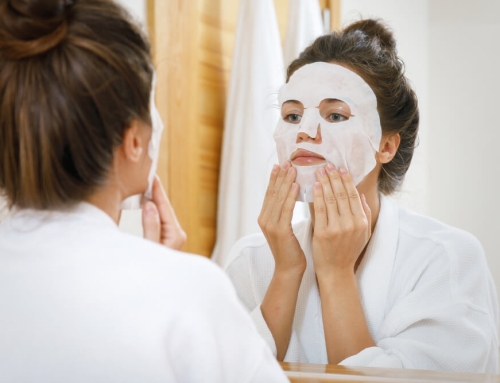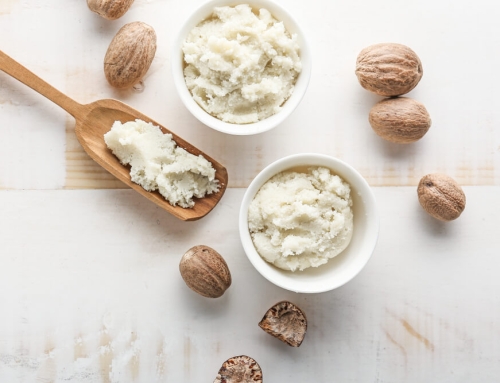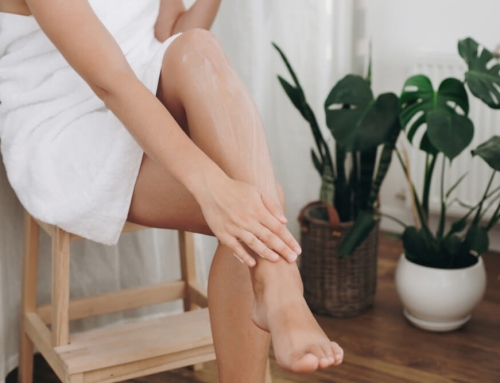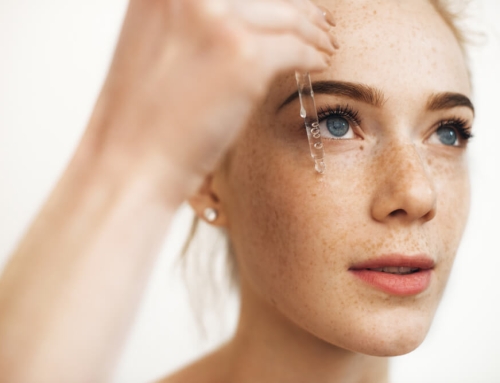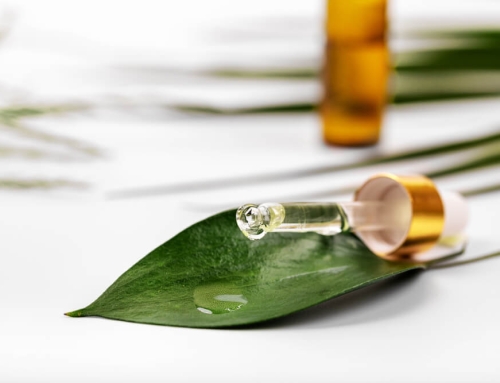Does your skin usually take on a drier and rougher feel and look during the winter months?
This is common due to the lack of humidity in dry winter air. Not only that, but indoor heating dries the skin out too, meaning that your skin never gets any respite from the dryness all around it.
Keeping your skin moisturized is a great way to keep dryness and flakiness at bay, but you still need to do something about all of those flaky skin cells that build up on the surface of your skin.
This is where exfoliation comes in…
However, your winter exfoliation game needs to be a little different from the exfoliating you do in the summer.
Why?
Because your skin will be much more sensitive in the winter. The skin also naturally produces less oil in the winter, meaning that you need to be careful not to strip this away with your exfoliation technique.
So, how should you be exfoliating in the winter?
Here are some tips and tricks to get you on the right path.
Choose Your Method of Exfoliation Carefully
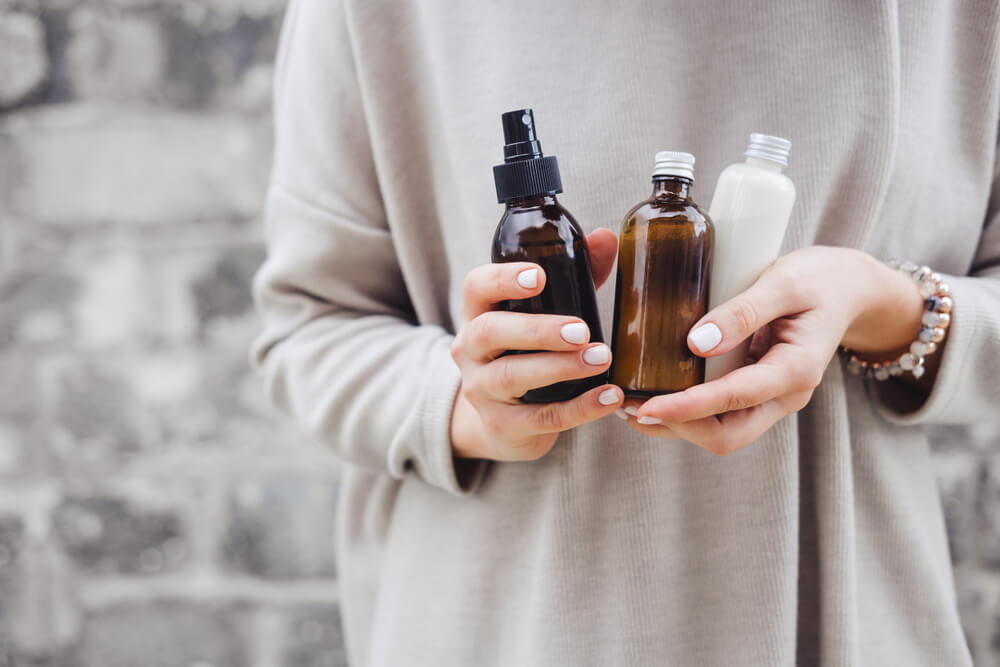
As mentioned above, your skin will be much more sensitive in the winter months. Although you may be seeking an exfoliation method that will quickly scrub off all of those dead skin cells from your skin, anything too harsh could end up causing more harm than good.
To begin with, let’s take a look at the two main forms of exfoliation:
- Physical Exfoliation – this makes use of an abrasive substance, such as a scrub or a sponge, to physically slough the dead skin cells off from the surface of your skin
- Chemical Exfoliation – this makes use of particular acids to dissolve away the glue-like substance that keeps those flaky dead skin cells attached to the skin, enabling them to simply fall off or be washed away
Since chemical exfoliation requires the use of acids, many people assume that this is a harsher method of exfoliation.
However, they couldn’t be more wrong…
Chemical exfoliation tends to be so much gentler on the skin than physical exfoliation, so long as you are using the right combination of acids. On the other hand, while physical exfoliation may reward you with instant gratification, scrubbing at your skin with an abrasive substance can lead to micro-tears in the surface of your skin, and can also exacerbate fine lines and wrinkles.
There is one other form of exfoliation that doesn’t really fit into either of those categories…
This is exfoliating with the use of fruit enzymes. Although they work in a similar way to chemical exfoliants, fruit enzymes, which, as you can tell from their name, come from fruit, are extremely gentle. Side effects are few, and you are also able to enjoy the antioxidant benefits that those enzymes contain.
The only downside to enzymatic exfoliation is the fact that fruit enzymes are difficult to stabilize in a product. They deteriorate extremely quickly, often making it unrealistic, from a financial perspective, to make this your main method of exfoliation.
Know Your Acids
If you decide to go down the route of chemical exfoliation, you need to be aware of your many different options. Most of the acids used for chemical exfoliation are naturally derived, but they each have their own unique benefits.
There are two main forms of acids used for chemical exfoliation:
- Alpha Hydroxy Acids – these acids are water-soluble, and are usually derived from fruits
- Beta Hydroxy Acids – these acids are oil-soluble, meaning that they can penetrate through thicker layers of oil on the skin, working their magic on a deeper level
Now, you might be thinking…
If beta hydroxy acids (BHAs) work deeper in the skin, then surely that means that they are the better choice?
It all depends on your skin type…
If you have oily skin, then yes, BHAs are the way to go. The most common BHA out there is salicylic acid, and this ingredient will do a great job at delving deep into the pores, clearing away dead skin cells and any excess oil. Salicylic acid can be extremely helpful when it comes to preventing acne breakouts.
So, why shouldn’t other skin types use salicylic acid too?
Because, as mentioned earlier, your skin produces less oil in the winter. These oils have protective qualities, not only when it comes to keeping your skin moisturized and hydrated, but also in terms of preventing environmental damage. Unless you have excessively oily skin, those natural oils are something that you want to hold on to. This is why water-soluble alpha hydroxy acids (AHAs) tend to be more beneficial.
To make matters a little more complicated, there are a few different AHAs that you can choose from:
- Glycolic Acid – derived from sugar cane, this is the most common AHA. It is extremely effective at exfoliation, and also boasts anti-inflammatory and antimicrobial properties
- Lactic Acid – derived from milk, lactic acid is more gentle than glycolic acid, making it a good choice for dry or sensitive skin types
- Tartaric Acid – although lesser-known than the two acids mentioned above, tartaric acid, which comes from grapes, exfoliates while helping to minimize sun damage
- Mandelic Acid – since this acid, which comes from almonds, has quite a large molecular size, it doesn’t penetrate too deeply into the skin, which is why it is usually combined with other AHAs in exfoliants. However, you can still use it on its own for a mild exfoliation, along with improvements in skin texture and pore visibility
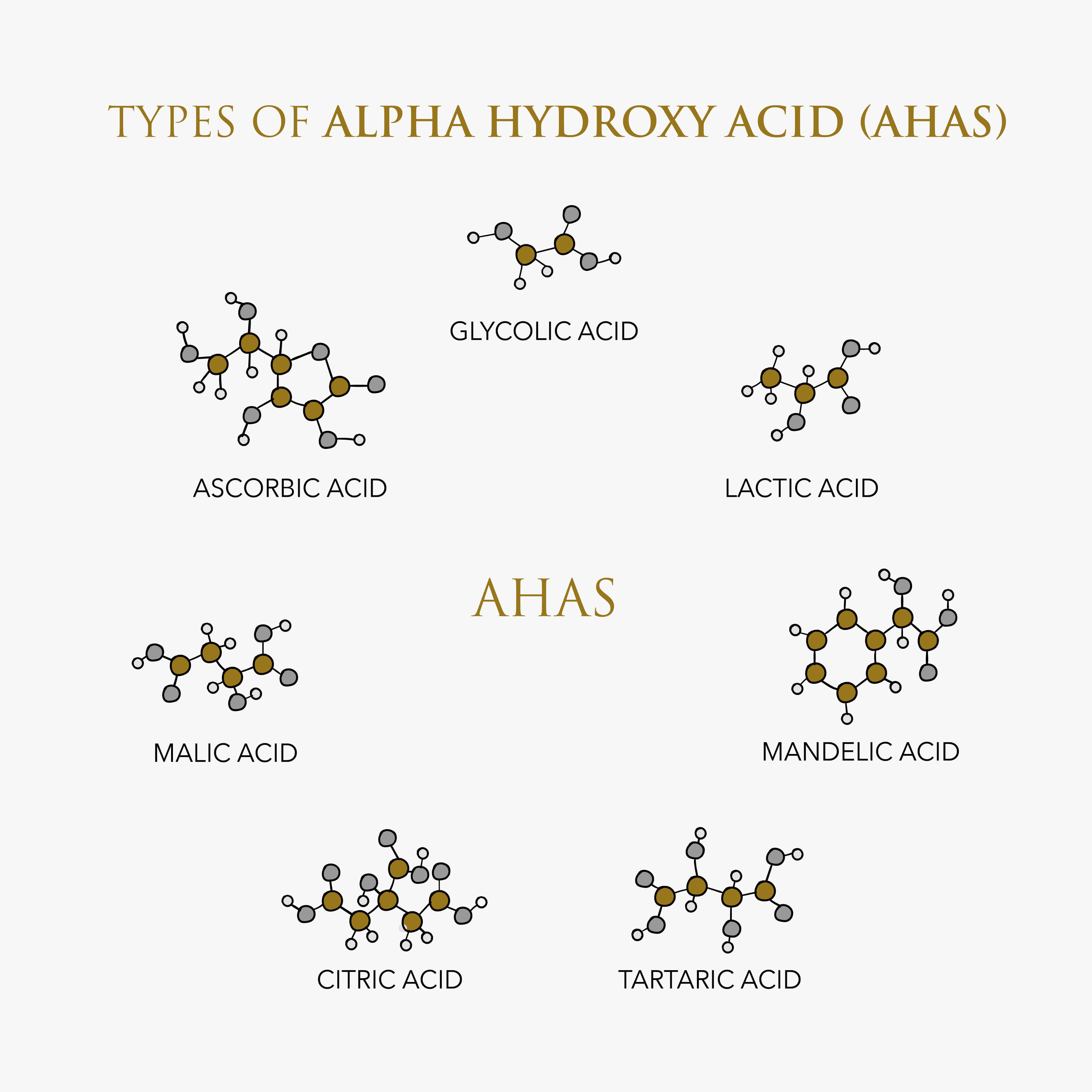
Exfoliate Regularly…But Not Too Often
You will likely notice an immediate improvement in your skin once you are done exfoliating. Your skin will take on a brighter, smoother and softer look and feel, and this usually gets people pretty excited. So much so that they end up exfoliating more frequently, especially during the winter months.
However, this is when the problems begin…
Exfoliation is great for removing that outer layer of dead skin cells. However, once those are gone and you continue exfoliating, you end up damaging the layer below it too. This can lead to a number of problems, such as:
- Excessive dryness
- Redness and sensitivities
- Irritations
Since over-exfoliation opens up that protective layer of skin, this also means that bacteria and other impurities are more likely to enter into your skin, increasing your chances of experiencing breakouts.
So, how often should you be exfoliating in the winter?
Again, it all depends on your skin type, as well as the method of exfoliation you choose.
For most people, exfoliating twice a week is usually enough. If you have oily skin, you may need to increase this to three or four times a week. On the other hand, if you have sensitive skin, you may need to drop this down to once a week. Of course, if you are using a very mild chemical exfoliant, you will be able to exfoliate more frequently than if you were using something highly concentrated. The key is to listen to your skin, seeing how it reacts after each exfoliation session.
Already experiencing the symptoms of over-exfoliation?
Don’t worry, because although this means that you have caused damage to your skin, this isn’t permanent. You will need to hold off on the exfoliation for a few weeks to give your skin some time to heal. Make sure that the rest of the skin care products you use, especially your cleanser, are mild and gentle, so as not to exacerbate your issues.
The Best Time of Day to Exfoliate
Wondering whether you should be exfoliating in the morning or at night?
This all depends on your lifestyle, as well as your skin care routine…
During the night, while you are fast asleep, your skin cells work hard to regenerate and renew, meaning that you may end up with a rough and dull complexion in the mornings, since dead skin cells will have been building up overnight. This is when a morning exfoliation session can be extremely beneficial.
However, if you tend to wear heavy layers of makeup, you may want to save your exfoliation for the evening, as this will ensure that all traces of product have been removed from your skin. Evening exfoliation would also be more beneficial for those who use strong skin care products in the evening, such as retinol. Piling on an exfoliant at this time too will only be too harsh for your skin, leading to damage.
Don’t forget, exfoliation can also make your skin more sensitive to the sun. If you decide to exfoliate in the morning, make sure that you protect your skin with a thick layer of sunscreen before you head outside.
Never Leave Your Skin Bare After Exfoliating
After you’re done exfoliating, your skin will be a little more sensitive, and also more vulnerable to damage. If you leave your skin bare, you will notice that it dries out much faster, due to the fact that its protective layer of oils and dead skin cells are now gone.
This is why it is so important to apply a layer of moisturizer to your skin immediately after you are done exfoliating.
If possible, try to do this while your skin is still damp.
Why?
Because a moisturizer is designed to form a protective layer over the surface of the skin, trapping in moisture and preventing it from evaporating. If you do this while you already have some water on your skin, then all of that extra moisture will end up being fed into your skin, rather than evaporating off into the air.
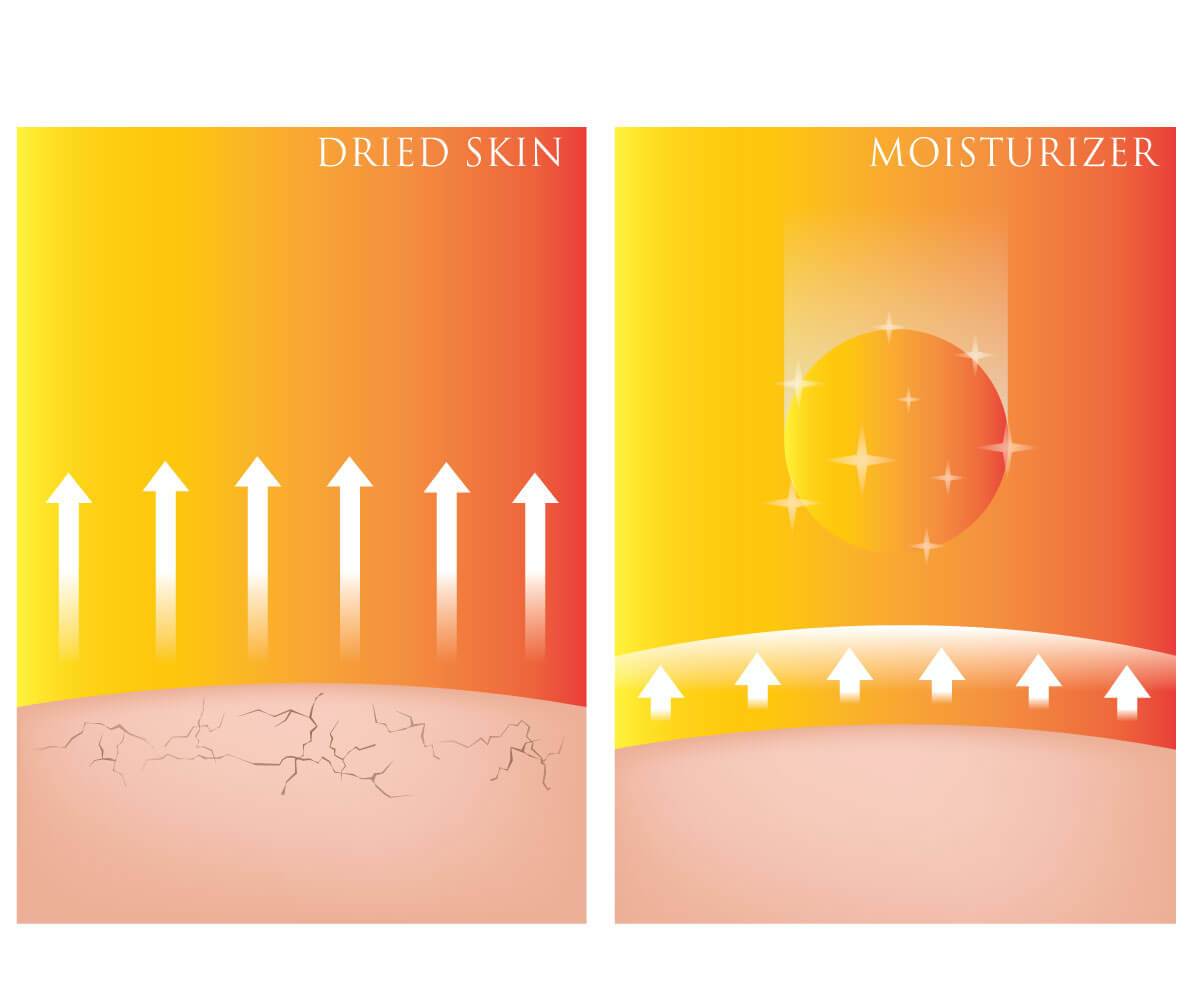
Don’t Forget About Your Body
Hidden underneath all of those thick layers of winter clothing, the skin on the body can often end up neglected during the winter. Rather than having to deal with those rough elbows and knees come spring, try to make an effort to keep your body exfoliated too during the colder months.
Should you be exfoliating your body in the same way you do your face?
Not necessarily…
The skin on your face is very delicate, which is why you need to be careful to not use a harsh exfoliant. However, the skin on your body tends to be much stronger and tougher, so you can go ahead and exfoliate with an easy-to-use body scrub.
Looking for a new body scrub to take you through the winter?
Try the OROGOLD 24K Classic Body Scrub, which can be used while you are in the shower. It contains some incredible botanical extracts, such as:
- Aloe vera
- Organic cucumber
- Organic chamomile
- Organic marigold
- Organic argan oil
- Sunflower
- Dragon’s blood
…Plus so much more! Its exfoliating properties come from its corn kernel meal, meaning that it’s effective yet still relatively gentle.
While scrubs are great for the majority of your body, there is one area where you do need to be careful…
When it comes to exfoliating your neck and chest, you may want to opt for the same gentle exfoliants you use on your face.
Why?
Because, just like the face, the skin on the neck and chest is pretty delicate. This is why you will often experience wrinkles here sooner than the rest of your body, usually around the same time they begin appearing on your face.
Exfoliation is one of the best ways to keep your skin looking fresh and radiant over the winter. So long as you are diligent when choosing the best method of exfoliation for your skin, while being careful as to how often you exfoliate, your skin will definitely thank you for the extra care during the drier months.




